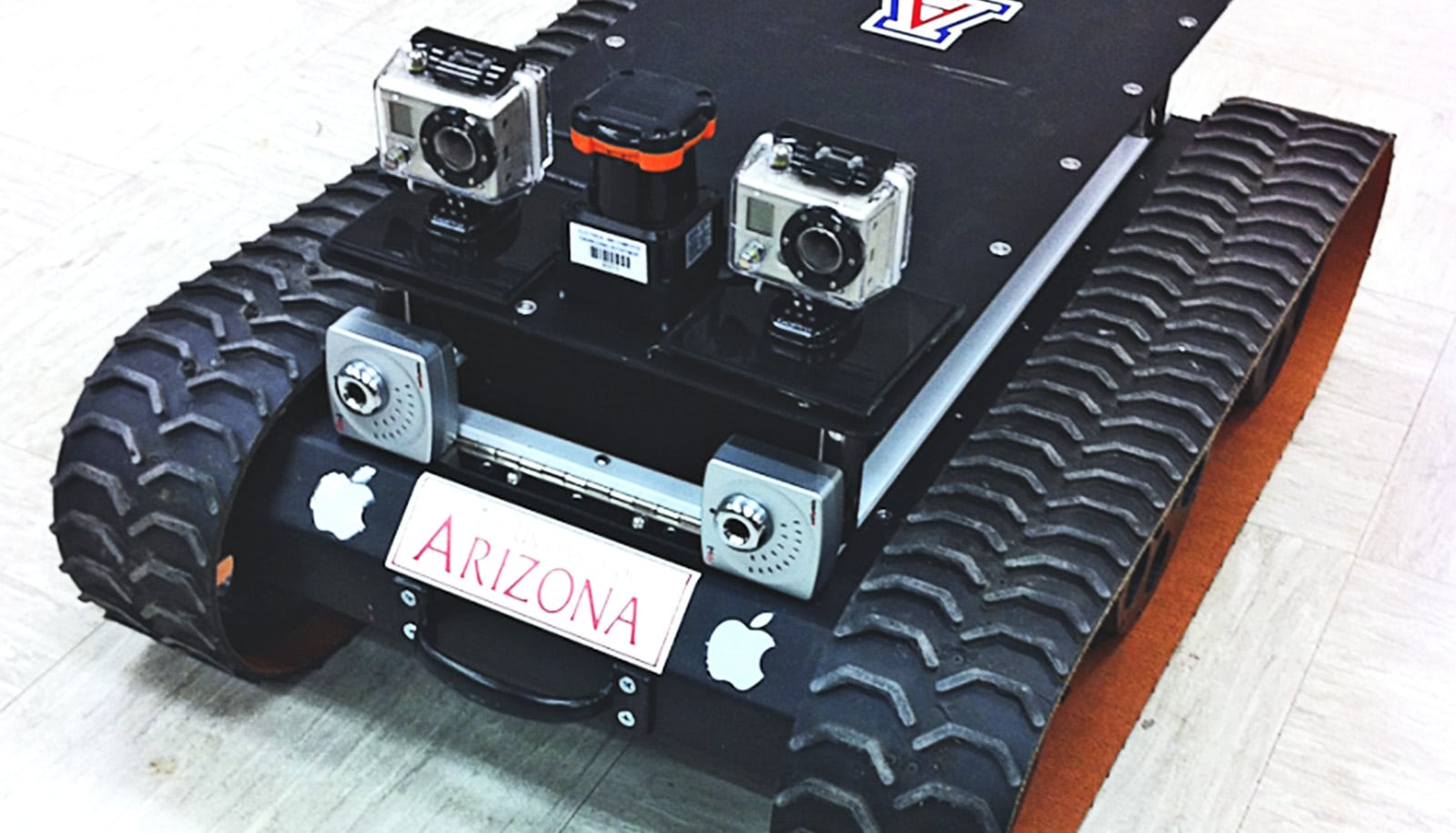In surprise discovery, NASA’s Curiosity Mars rover has found cracks in ancient Martian mud.
Scientists aren’t entirely sure how life began on Earth, but one prevailing theory posits that persistent cycles of wet and dry conditions on land helped assemble the complex chemical building blocks necessary for microbial life.
This is why the patchwork of well-preserved ancient mud cracks found by the Curiosity rover is so exciting to the mission’s team.
A new paper in Nature details how the distinctive hexagonal pattern of these mud cracks offers the first evidence of wet-dry cycles occurring on early Mars.
“These particular mud cracks form when wet-dry conditions occur repeatedly, perhaps seasonally,” says the paper’s lead author, William Rapin of France’s Institut de Recherche en Astrophysique et Planétologie.
The Curiosity rover is gradually ascending the sedimentary layers of Mount Sharp on Mars, which stands 3 miles (5 kilometers) high in Gale Crater.
The rover spotted the mud cracks in 2021 as it explored a rock target nicknamed “Pontours,” found within a transitional zone between a clay-rich layer and one higher up that is enriched with salty minerals called sulfates. While clay minerals usually form in water, sulfates tend to form as water dries up.
The minerals prevalent in each area reflect different eras in Gale Crater’s history. The transitional zone between them represents a period when the lakes and rivers that once filled the crater had begun to recede after long dry spells became prevalent.
As mud dries out, it shrinks and fractures into T-shaped junctions, like what Curiosity discovered previously at “Old Soaker,” a collection of mud cracks lower down on Mount Sharp. Those junctions are evidence that Old Soaker’s mud formed and dried out once, while the recurring exposures to water that created the Pontours mud caused the T-junctions to soften and become Y-shaped, eventually forming a hexagonal pattern.

The hexagonal cracks in the transitional zone kept forming even as new sediment was deposited, revealing that the wet-dry conditions continued over long periods of time. ChemCam, Curiosity’s precision laser instrument, confirmed a hardy crust of sulfates along the cracks’ edges, which isn’t too surprising given the proximity of the sulfate region. The salty crust is what made the mud cracks resistant to erosion, preserving them for billions of years.
Curiosity has previously found carbon in the sediments, including a form known as “reduced” carbon, which can be produced by either non-biological processes or by life. But it’s still too soon to tell whether the environment would have been suitable for life to form.
“We need more paleo-environmental context to understand if the conditions were suitable for prebiotic chemistry,” says Edwin Kite, a professor at the University of Chicago and a coauthor on the study.
“This is the first tangible evidence we’ve seen that the ancient climate of Mars had such regular, Earth-like wet-dry cycles,” Rapin says. “But even more important is that wet-dry cycles are helpful—maybe even required—for the molecular evolution that could lead to life.” Specifically, wet-dry cycles help in the formation of nucleic acids—molecules which are considered chemical buildings blocks essential to life as we know it.
The kinds of conditions that sustain microbial life—those that allow a long-lasting lake, for example—aren’t the same as the conditions that scientists think are required to promote chemical reactions that might lead to life. A key product of those chemical reactions are long chains of carbon-based molecules called polymers, including nucleic acids, which require just the right watery conditions.
Although water is essential to the chemistry that led to life, sometimes there can be too much of a good thing. Wet-dry cycles control the concentration of chemicals that feed the fundamental reactions toward the formation of polymers.
“This paper expands the kind of discoveries Curiosity has made,” says the mission’s project scientist, Ashwin Vasavada of NASA’s Jet Propulsion Laboratory in Southern California. “Over 11 years, we’ve found ample evidence that ancient Mars could have supported microbial life. Now, the mission has found conditions that may have promoted the origin of life, too.”
The discovery of the Pontours mud cracks may in fact have provided scientists their first opportunity to study the remains of life’s cauldron. Earth’s tectonic plates constantly recycle its surface, burying examples of its prebiotic history. Mars doesn’t have tectonic plates, so much older periods of the planet’s history have been preserved.
“It’s pretty lucky of us to have a planet like Mars nearby that still holds a memory of the natural processes which may have led to life,” Rapin says.
Curiosity was built by NASA’s Jet Propulsion Laboratory, which is managed by Caltech in Pasadena, California. JPL leads the mission on behalf of NASA’s Science Mission Directorate in Washington.
Funding for the work came from NASA and the Canadian Space Agency. This article has been adapted from an article first published by NASA.
Source: University of Chicago



